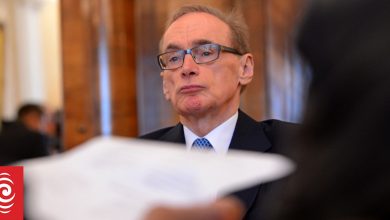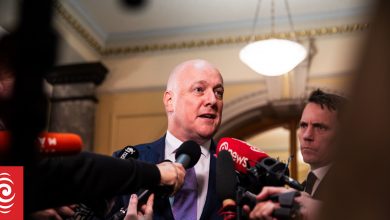The Week in Politics: Job cuts surge and Waitangi Tribunal trouble
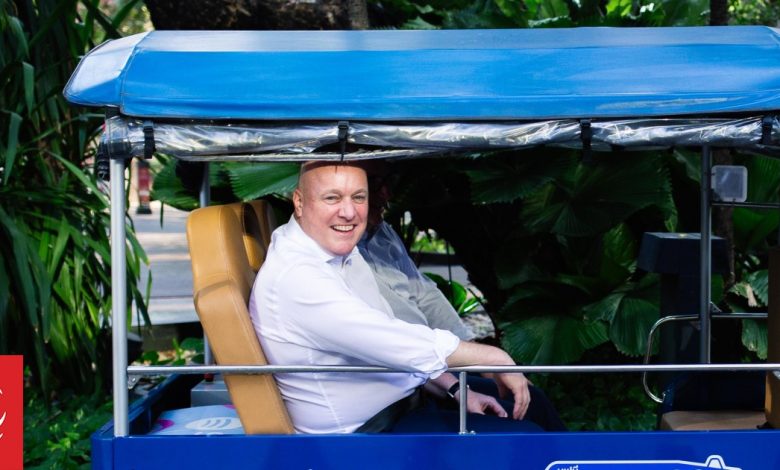
Analysis – It’s a grim week for public servants as more than 1000 jobs go in a day, there’s trouble brewing between the government and the Waitangi Tribunal, the media takes time to look at itself while the prime minister spends the week in Southeast Asia.
Public service job cuts really kicked in this week when more than 1000 went in a single day.
On Wednesday, Oranga Tamariki the Ministry for Children, announced it proposed https://www.rnz.co.nz/news/national/514484/oranga-tamariki-proposes-to-cut-more-than-400-jobs cutting 447 jobs], RNZ reported.
On the same day, the Ministry of Education said it proposed cutting 565 jobs, with RNZ saying it understood 225 roles were vacant.
The Public Service Association described it as “a brutal and dark day”.
Prime Minister Christopher Luxon, speaking from Thailand, said all the cuts were from the back office.
“There has been a massive amount of bureaucracy built up in the system,” he said.
Labour leader Chris Hipkins described the situation as “bleak” and said a third of the cuts directly affected children.
Teachers said they were concerned about the rollout of curriculum and NCEA changes.
Post-Primary Teachers’ Association president Chris Abercrombie told Morning Report the cuts were “absolutely” going to affect teachers and principals.
“No teachers or principals will lose their jobs in these cuts, that’s really clear, but the work they do is supported by the curriculum centre, by the regional offices, by those positions,” he said.
The latest cuts brought the total number of jobs lost to more than 3000 – on Friday morning RNZ’s running total stood at 3042 which can be seen in the report ‘NZ public service job cuts: what we know so far’.
The report says Minister for Regulation David Seymour previously indicated the total could hit 7500.
A bar graph shows the Ministry of Education, the Department of Internal Affairs and Oranga Tamariki are leading the numbers.
But while the shock of the latest cuts was sinking in, Stuff’s Susan Edmunds reported another side of the story.
“Just over 3000 public sector job cuts have been announced this year – but the reduction is still only just over half the increase recorded in the 18 months to December,” she said.
“That took the total number of public servants in the workforce to just under 65,700 compared to 60,381 in June 2022.
Edmunds’ report quoted Arthur Grimes, professor of public policy at Victoria University, who said the sector had grown “hugely” in the past six years and the cuts being proposed – even 1000 in one day as seen on Wednesday – were “smallish” relative to how much it had grown.
“In terms of the number of people working for the core state sector in Wellington, even after these cuts there has been strong growth over the last six years,” Grimes said.
“In aggregate numbers that’s undoubtedly the case. The government won’t be cutting back anywhere near as much as the previous government enlarged by.”
Grimes thought the policy of requiring all departments to cut spending by about 7 percent could create situations where cuts were not appropriate.
“The idea of doing across-the-board cuts across all departments is a misguided way to go about doing this sort of thing,” he said.
“It’s not driven by priorities… it means some areas that have grown a lot and probably should be cut by more won’t receive enough of a cut, but other areas that might not have grown a lot might be more important but they’ll be cut.”
Tribunal trouble
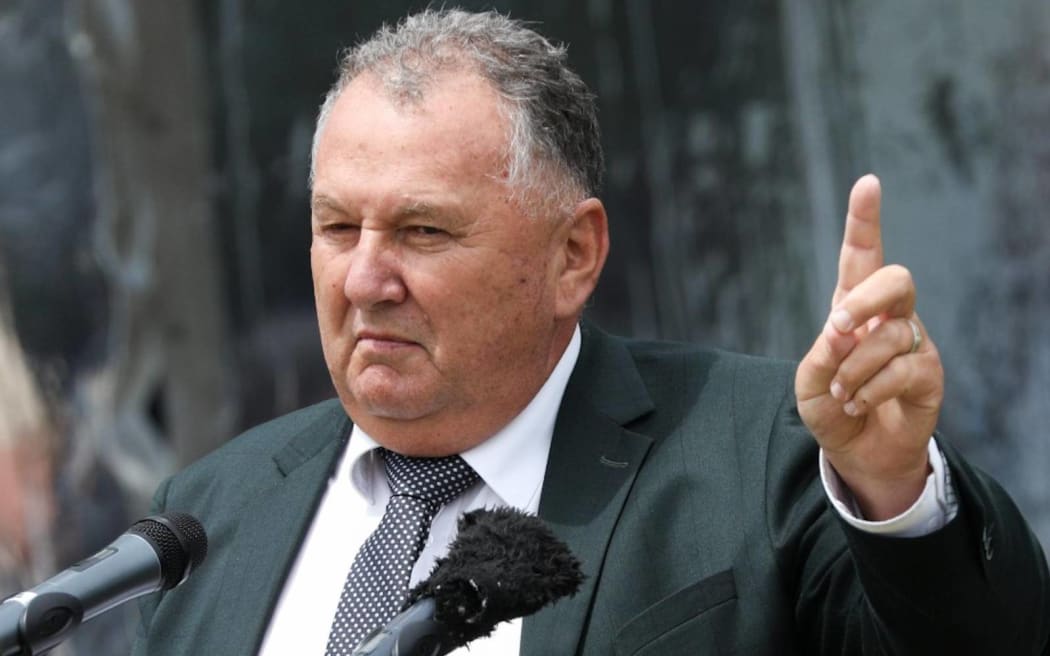
Shane Jones has mostly been talking about mining and fishing lately, but this week he let go with a broadside against the Waitangi Tribunal.
The Herald reported him saying: “The Waitangi Tribunal has no business running its operations as some sort of star chamber delivering pre-emptory summons for ministers to rock up and be cross-examined or grilled in some kind of wannabe American star chamber pulp fiction gig.”
The Māori Law Society said it had complained to the prime minister about his “savage criticism”, describing it as inappropriate and unconstitutional.
“The society wants the prime minister and Cabinet Office to review whether Jones’ comments this week breach the cabinet manual and for Attorney-General Judith Collins to ‘exercise her constitutional function to uphold the integrity of the judicial branch of government within the cabinet’,” the Herald’s report said.
Jones’ comments were in response to a report that the tribunal had summonsed Children’s Minister Karen Chhour to appear and explain why she wanted to repeal a section of the Oranga Tamariki Act.
“In a rare move, the Waitangi Tribunal has summonsed a sitting minister,” the report said.
“But Crown lawyers are objecting and have said if she is summonsed they will seek a judicial review by the High Court to stop it.”
A report by RNZ confirmed Crown lawyers had filed judicial proceedings in the High Court to block the tribunal’s summons.
It said papers were filed on Wednesday and a hearing was expected on Monday.
The section of the act in question is 7AA, which requires the chief executive to demonstrate a practical commitment to the principles of the Treaty of Waitangi.
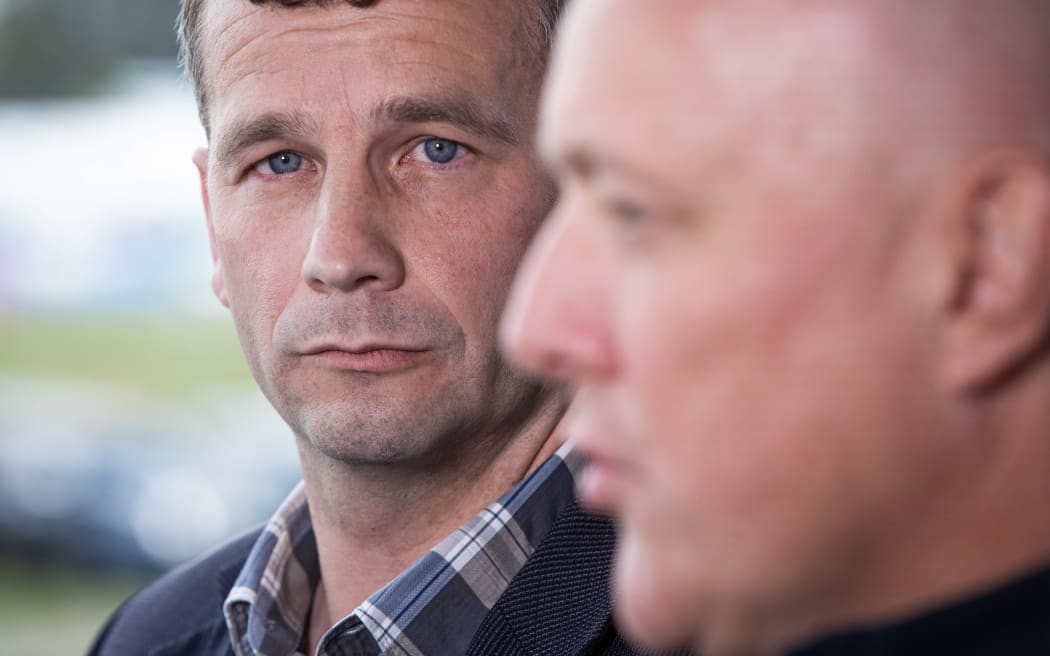
Scrapping it is part of the coalition agreement between National and ACT, and David Seymour had his say.
“ACT leader David Seymour has hit back at the tribunal, suggesting they may be ‘wound up for their own good’,” RNZ’s report said.
It quoted Seymour: “The tribunal summonsed the wrong woman, on the wrong issue, at the wrong time. No wonder some people think they’re past their use-by date.”
The Herald’s senior correspondent and former political editor Audrey Young wrote an article about this situation headed ‘Government on collision course with Waitangi Tribunal over Karen Chhour summons’.
Young said the judge presiding over the tribunal’s urgent inquiry, Michael Doogan, “summonsed Act Party minister Karen Chhour to appear before it – against her will”.
Her article quoted the judge as saying: “We… are of a view that we are entitled to ask the minister for information.”
Young said the tribunal was a commission of inquiry and had the power to issue a summons requiring any person to attend and give evidence and to produce documents.
“But the government’s lawyers, Crown Law, says she won’t be appearing or giving written evidence,” her report said.
“Its lawyers have argued that the move contravenes constitutional principles and that the repeal was a political decision not based on empirical evidence.”
Young’s article concluded: “It seems rather unusual that the minister could not have furnished the tribunal with a written statement.”
Media landscape changing
The media spent some time looking at itself this week after the Newshub closure was confirmed, TVNZ said it was cutting some of its programmes, and Stuff revealed it had reached an agreement to supply TV3 with a 6pm news bulletin.
“Journalism must adapt or die in modern media landscape,” the Sunday Star Times said in an editorial written by chief news director Craig Hoyle.
He said the traditional advertising model, where ads subsidised the cost of news, was collapsing as digital revenue was hoovered up by Google and Facebook.
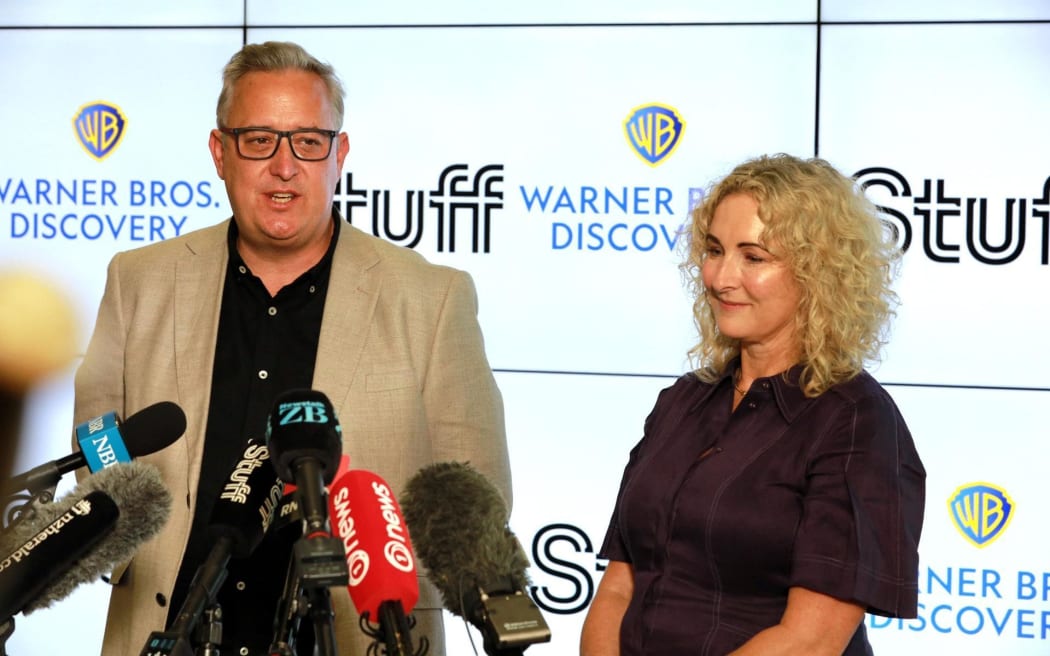
“Prime Minister Christopher Luxon seems content to dismiss this as the free market at work, and Media and Communications Minister Melissa Lee has been largely missing in action, but the government would do well to remember the critical role of journalists.”
Hoyle said the media had its own part to play, and he referred to the recently released AUT report that said just one in three Kiwis trusted the news.
“As journalists, we serve the public, and if the public doesn’t trust us then some deep soul-searching is needed,” he said.
“Somewhere along the way that relationship has broken down, and it’s on us as journalists to begin rebuilding trust.”
The Post newspaper sought the opinions of seven media leaders on how to save the fourth estate and also ran an article headed ‘The political art of trying to save the media (or not)’.
It referred to the paper Minister Lee was planning to take to Cabinet and said there was “certainly robust discussion” happening behind closed doors within the coalition.
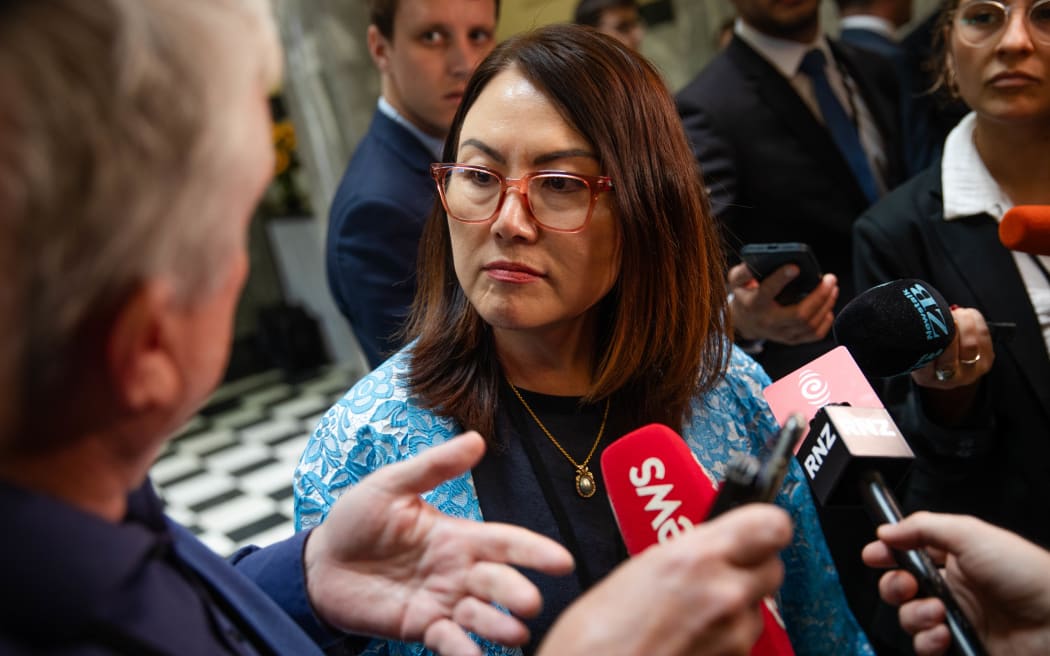
Stuff’s Tova O’Brien said it had been a month and a half since the prime minister asked Lee to “leap into action” but so far there had been nothing.
“There are reports that Winston Peters is holding up the paper because Lee failed to properly consult with NZ First,” she said.
“But Stuff understands the normal process was actually followed, that the cabinet paper was given to coalition partners New Zealand First and ACT way back, on March 11.”
O’Brien said agreement couldn’t be reached at cabinet committee level which meant the party leaders would have to do it.
“It’s now up to Prime Minister Christopher Luxon, Winston Peters and David Seymour to sort this mess out,” O’Brien said.
She didn’t think that would happen until the final week of April because of their travel commitments.
Political ties with Southeast Asia
Luxon began his week in Singapore, leading a trade delegation.
“Prime Minister Christopher Luxon is confident New Zealand’s relationship with Singapore will remain strong after the leader of that country resigned just hours after a joint statement,” RNZ reported.
He had held talks with Prime Minister Lee Hsien Loong shortly before Lee confirmed his resignation, with Deputy Prime Minister Lawrence Wong Shyun Tsai taking over the role on 15 May.
“Nothing happens in Singapore without a plan,” Luxon said when asked about the timing.
“It speaks to the depth of trust that we have between the two countries that what was such a momentous day for them politically, the prime minister was very generous in the sense [that] he wanted to have our visit… announce his retirement.”
Luxon said he then met Lawrence Wong “and he’ll be an outstanding prime minister of Singapore as well”.
He said defence, trade and security were all “very integrated agendas” and he was confident in the strength of the relationship under Wong.
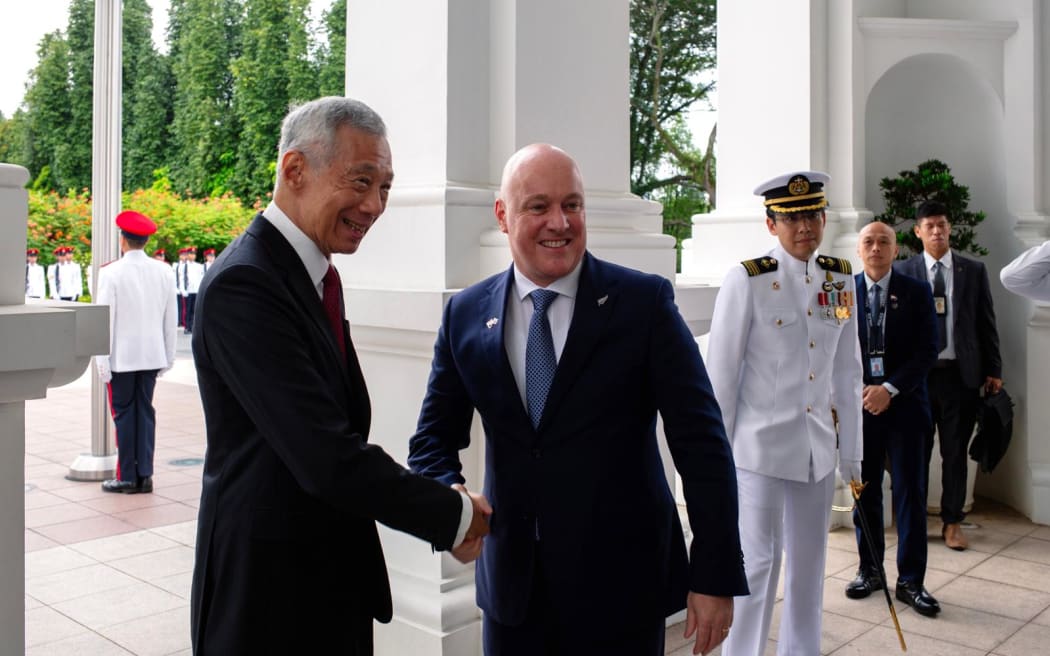
Luxon and his team then flew to Thailand for what RNZ described as a one-day blitz through its capital Bangkok.
“A period of military rule after a 2014 coup had cooled relations, but new Thai Prime Minister Srettha Thavisin – a businessman-turned-politician, dubbed the Salesman PM – comes from a similar mould to Luxon,” the report said.
They jointly announced a “new, ambitious goal” of tripling two-way trade by 2045.
“The announcement, however, hides the fact it only requires maintaining the existing level of growth with much of the work already being done by inflation. They did not answer questions after the announcement,” the report said.
The two prime ministers also committed to reinvigorating tourism, resuming direct flights which were shut down because of the Covid pandemic, and returning visitor numbers to pre-Covid levels.
From Thailand Luxon flew to the Philippines, the last stop on his South-East Asian tour.
“We’re in the Philippines, a country of 110 million people, one of the fastest growing economies in Southeast Asia and I think just a huge opportunity for New Zealand to build out more trade and investment,” Stuff quoted him as saying on arrival.
*Peter Wilson is a life member of Parliament’s press gallery, 22 years as NZPA’s political editor and seven as parliamentary bureau chief for NZ Newswire.
According to the news on Radio New Zealand

